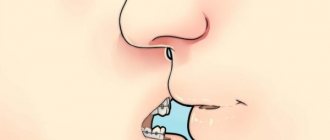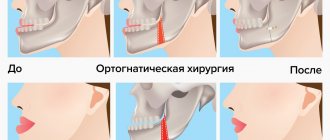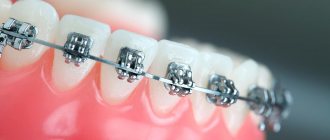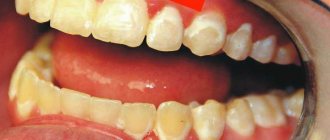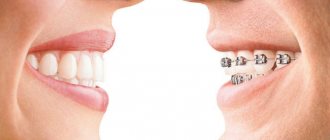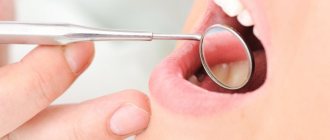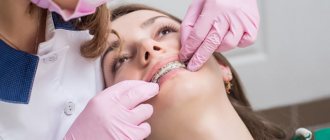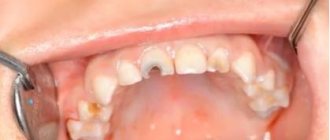7372
The desire to have a charming smile, and the irresistible desire to smoke - already calls into question one of them. You have to choose between two desires, or maybe you can really combine them?
Orthodontic dentistry helps correct the imperfections of nature with the help of various designs. Braces have gained great popularity.
The process of correction using braces is a responsible and lengthy one, and also requires compliance with certain rules.
This information will give you a complete understanding of the care and unwanted actions when wearing orthodontic appliances. For example, it will help to find out how much smoking affects the condition of the protective layer of teeth and the service life of system elements.
Is it possible to smoke with braces?
Nicotine “leashes” calcium from the body, making them weak. Long-term smoking literally destroys teeth. However, there is also an aesthetic side. Due to tobacco smoke and the resins it contains, the enamel acquires a yellow-brown tint.
If you continue to “puff” with braces, there is a risk that your teeth will become “spotty”: the open areas will darken significantly, and the areas under the elastic bands will remain light. Such a prospect is unlikely to seem attractive. A truly correct decision is to quit smoking before installing the system.
Quitting cigarettes right away is not always easy. But beauty, as we know, requires sacrifice. The solution could be a vape or an electronic cigarette. They do not stain tooth enamel and help survive moments of nicotine withdrawal.
Another important point is how smoking will affect the braces system itself. The material of construction plays a big role.
Is it possible to smoke constantly if you have ceramic braces?
In general, there is practically no threat to them. Ceramics are very resistant to various types of dyes. Only rubber bands can darken from nicotine over time. But imagine what white braces will look like on a smoker’s yellow teeth.
What about metal braces?
The structure itself will not change anything: the metal will not change. However, “spotting” after removal of the installation cannot be avoided.
The situation with sapphire braces is somewhat different.
They are light, transparent and comfortable. But for yellow teeth, such a design is practically taboo: it will look poor. The issue of smoking should not be raised here in the first place.
Cigarettes and orthodontic treatment
Smoking is undesirable in any condition, and the period of wearing braces is no exception, although there are no categorical prohibitions. There are only arguments that encourage you to give up a bad habit.
Maintaining oral hygiene with braces is already significantly complicated, so you need to understand that smoking will add additional worries to this.
And all the negativity from the addiction will be reflected not only on devices:
- As for the braces, they themselves will not suffer much. Most often, the color of the elastic bands on ligature models changes, and hence the unpleasant aesthetic perception.
- Smoking provokes the formation of tartar and plaque. Resins deposited in hard-to-reach areas make high-quality teeth cleaning almost impossible until the structures are removed.
- After removing the system, lighter marks remain on the enamel, while the main part of the protective layer will be yellowish or even brown. It's different for everyone.
- The unpleasant odor from nicotine , ingrained into structural elements, cannot be completely eliminated.
Useful tips on what to do if your braces come off at night or during the day.
Let's talk here about whether there is a need to purchase toothpaste for braces.
At this address https://orto-info.ru/sistemyi-vyiravnivaniya-zubov/breketyi/esteticheskie-korrektsiya-plyus-ukrashenie.html we offer to evaluate the result of treatment using aesthetic braces using before and after photos.
Features of hygiene when wearing braces.
Treatment with braces corrects the bite not only from an aesthetic point of view, but also from a functional point of view.
Scientists have proven that both the absence of teeth, improper prosthetics, the presence of inflammatory processes in the oral cavity, and malocclusion affect human health in general. When a person decides that he is ready to correct his bite by installing braces, he needs to objectively understand that with this process his lifestyle will also change during the period of wearing braces. Starting from proper, more frequent and thorough hygiene, ending with the exclusion of certain foods from the diet.
A responsible orthodontist, before starting a diagnosis, not to mention installing braces, carefully assesses the patient’s level of personal oral hygiene. If proper hygiene skills are lacking, then the doctor teaches the rules of hygiene. When the level of hygiene is very poor, sometimes the orthodontist can assign a certain period of time to the patient (more often this happens with children or adolescents) to correct this issue and then invites him for a second examination.
Classic teeth cleaning with braces is complemented by a number of devices and manipulations after their installation. One toothbrush and floss will no longer be enough.
The mandatory arsenal of the future owner of a beautiful smile and properly functional bite should now include:
- A special orthodontic brush with V-shaped bristles. The brush can be a regular mechanical or electric one. For an electric brush, you need to buy special orthodontic attachments. It is important to take into account that with braces, their wear will be higher and they will have to be changed more often than conventional attachments. An ultrasonic brush is not recommended; it causes the braces to peel off directly from the surface of the teeth. Regarding electric toothbrushes, it is better to consult with your orthodontist which one to choose, since the rotation speed is different and with the high speed of the brush there is a risk of damaging the system itself. By placing the brush at an angle of 45 degrees relative to the surface of the teeth, the outer, inner and chewing surfaces are thoroughly cleaned.
- Next, you need to continue hygiene with superfloss and a special brush. It is better to discuss the choice of brush with your doctor. We first place the floss under the arch, and then between the teeth. We use a brush to perform hygiene under the arch.
- To carry out high-quality hygiene, you will also have to arm yourself with a special mono-beam brush, which will cope with cleaning the surfaces at the base of the braces and on the back of the teeth.
- Rinse aid (which one should be discussed with your doctor)
- Irrigator. It is the final chord before bed to reliably complete the entire very important process of cleaning the teeth from insidious food debris.
All of the above “tools,” with the exception of the irrigator, should be with you constantly and everywhere at times when there is a possibility of eating.
But so that there are no surprises and you have to deliberately refuse some meal just because you do not have the opportunity to carry out the necessary hygiene after eating, make it a habit to take these “helpers” with you everywhere. It is best to discuss the selection of all the necessary items for oral care with braces with your orthodontist. He knows the characteristics of your jaw and will be able to competently recommend this or that type or size of care product. Inexpensive but high-quality dentistry in Moscow has qualified doctors and professional equipment for the treatment and prevention of oral cavity.
Professional hygiene at the dentist needs to be done more often than “as usual” without wearing braces. You need to come once every 4 months. But there is also a special category of “lazy” patients who use independent cleaning methods extremely irregularly and poorly; they need to visit the dentist for hygiene every one and a half to two months. After all, none of the patients wants, having received a beautiful, even smile, to plunge into the lengthy and, requiring additional costs, the process of treating multiple caries.
Modification of material
Under the influence of tobacco, modification of the material of the bracket system may be observed.
Metal
If you choose metal devices (titanium, nickel, steel or gold alloy), then tobacco will not greatly affect their performance and appearance , as long as they may darken a little due to oxidation.
Ceramic
Ceramics look very aesthetically pleasing on teeth, and they are not affected by dyes and tobacco. However, when smoking, the following picture may be observed: white locks (or lighter in tone) on dark teeth. In addition, rubber auxiliary parts of the system, ligatures, for example, can be painted.
Monocrystalline (sapphire)
Sapphire models can be supplied with white orthodontic arches. This is done to ensure that the correction process takes place as unnoticed as possible by others. It should be noted here that for smokers this may be a wrong option, as it looks very unaesthetic on yellow teeth.
Plastic
Such systems are mainly used in pediatric orthodontics. However, some adult patients may choose them due to their low cost.
Plastic devices under the influence of tobacco quickly become colored and cloudy, and the structure of the plastic also changes. They become more fragile, prone to chipping and breaking.
Moreover, under the influence of hot smoke, deformation of the plastic occurs.
Smoking and braces – are these concepts compatible?
Smoking while wearing braces is, of course, not the best option. First of all, because smoking is harmful to your health. Harms the entire body. Probably everyone remembers the lungs of a smoker and a non-smoker from a biology textbook. It has long been known that smoking causes cancer. Well, I don’t want to talk about the unpleasant smell emanating from a heavy smoker.
.
Smoking is unlikely to have any effect directly on the braces themselves. Although, it depends on the type of braces used for treatment. You may have noticed that most smokers' teeth have a yellowish tint, and some even have brown teeth. The rubber bands on braces can be stained in the same way (typical for ligature braces). When smoking, the braces themselves are sometimes also stained (primarily, we are talking about plastic braces).
A smoking patient is a disaster
Now let's get back to bad breath. Many non-smokers simply cannot stand the smell of cigarettes. Now imagine that your attending physician is one of them. It will be very unpleasant for him to work with you. After all, each appointment lasts not five minutes, but much more. The distance from your open mouth to the doctor is very small, and the mask, believe me, does not retain this unpleasant odor. Each time, both you and the doctor will experience some discomfort: the doctor from the smell of cigarettes, and you from the fact that the doctor is unpleasant.
What to do if a brace falls off? Read and find out what to do in such an unforeseen situation. What you can’t eat with braces - a complete list of restrictions for braces wearers.
What to do?
So, what to do if braces and smoking are incompatible, but there is no opportunity or strength to get rid of the addiction right now? It is necessary to at least minimize the harm caused. To do this, try to follow a few simple rules:
- Pay attention to keeping your teeth and entire mouth clean. In addition to regular regular home cleanings, professional procedures will help you with this (at least once every two to one and a half months you need to have cleanings done in a good dental clinic). If you can’t pay for expensive procedures, try doing the same yourself - buy an irrigator. This device, which works using jets of water, cleans the oral cavity three to four times better than a regular toothbrush.
- You need to smoke as little as possible while wearing braces: the smaller the number of cigarettes you smoke in one day, the less impact your teeth and overall health will have.
- Regularly brush your teeth and tongue with toothpaste and sanitize with rinses (available in pharmacies and supermarkets), such as chlorhexidine.
Teeth and braces should be cleaned at least three to four times a day, but not more often. You should not brush your teeth every hour or half an hour: you will do more harm to them, as you will quickly erase the enamel.
- In order to reach areas near the braces and their fastenings during cleaning, you need to purchase a special brush that can bend and is shaped like a dish brush. With the help of such a brush, you can regularly clean all hard-to-reach areas of your teeth until you remove the braces.
- To always be sure of clean and fresh breath, you will have to use lozenges, sprays and other means to freshen the mouth.
So, for those who wear braces, it is not advisable to smoke a lot, since the teeth will become covered with plaque even faster, and after removing the braces, they will generally become uneven in color. To prevent this, you need to regularly and thoroughly brush your teeth and smoke less.
Oral hygiene rules for smokers
If quitting smoking while wearing braces is unrealistic, it is important to follow the recommendations of specialists regarding hygiene during the treatment process:
- Brush your teeth thoroughly. Preferably after every meal. The duration of the procedure is at least 10 minutes.
- Use the “correct” brush. The ideal option would be a brush with a V-shaped neckline or a monotuft shape with medium-hard bristles.
- Use high-quality paste and rinse aid. A paste should be selected with a high concentration of phosphorus and calcium; highly abrasive products should be excluded. The rinse aid strengthens the action of the paste, creating a barrier that prevents the activity of microbes.
- Use a brush and floss (dental floss). A brush helps remove food particles accumulated around the archwire and braces, and floss effectively cleans the space between the teeth, reducing the rate of plaque formation.
- Buy an irrigator. A simple device that produces a thin but strong stream of water allows you to clean areas of teeth and elements of braces in places where access to a toothbrush and other accessories is difficult.
- Have it professionally cleaned. Once every 2-3 months, it is recommended to visit the dentist’s office for hardware removal of deposits on tooth enamel.
